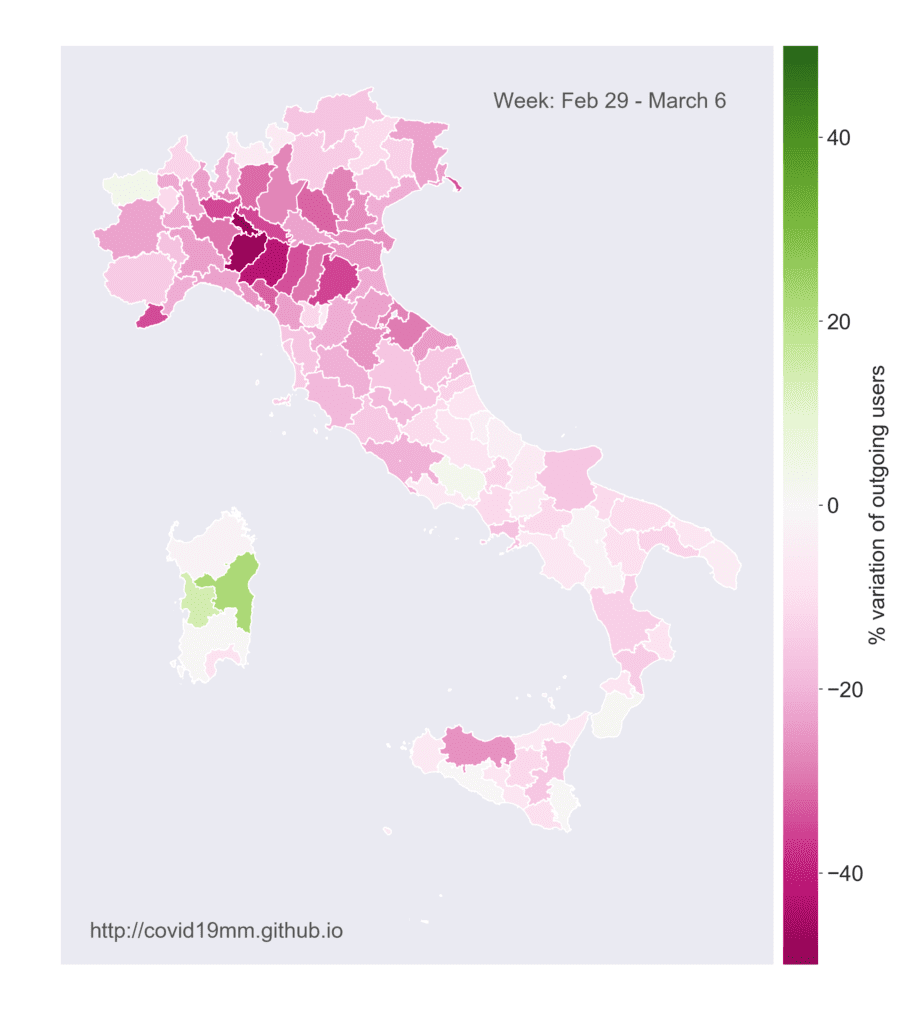How has the lockdown in Italy due to COVID-19 been affecting the mobility of citizens? This is a challenging question to answer, but location data can provide some insight.
Cuebiq has partnered with ISI Foundation to assess the efficacy of the intense travel and mobility restrictions put in place in Italy to curb the spread of the novel coronavirus. This analysis focuses specifically on how mobility and contact patterns changed in Italy following lockdown, looking at anonymized and aggregated location data.
Led by ISI Foundation researcher Michele Tizzoni, with aggregated data coming from Cuebiq’s Data for Good Program, this preliminary research shows in near-real time the effects of public health policies in Italy in the first three weeks of intervention (February 18 — March 10). It does that by measuring changes in the traffic fluxes between provinces, in the average distance traveled by users, and in the spatial overlaps of groups of users in public places.
Using Location Data to Power Mobility Analysis
Employing de-identified, large-scale and aggregated data from Cuebiq, this analysis assesses the impact of mobility restrictions and social distancing in Italy. Through its Data for Good program, Cuebiq provides access to aggregated mobility data for academic research and humanitarian initiatives. This first-party data is collected from anonymized users who have opted in to provide access to their location data anonymously, through a GDPR-compliant framework.
To learn more about the data collection and sample for this analysis, be sure to check out the full research.
View Research
Key Takeaways on Mobility in Italy
So, how has mobility in Italy changed due to increased regulations? The key results of this project can be summarized as follows:
- The initial mobility restrictions targeted at Lombardy, Veneto, and Emilia-Romagna have led to a reduction ranging between 10% and 30% of the traffic between Italian provinces during weeks 1 and 2.
- Following the national lockdown on March 9, the mobility fluxes between provinces have decreased by 50% or more, everywhere in the country.
- Following the national lockdown, the number of users who did not leave their home province after March 9 has increased by an average of 50% at the national level and more than 100% in the provinces of Lodi, Piacenza, Fermo, and Vercelli, with respect to the pre-outbreak period.
- The characteristic distance traveled by users considerably reduced over the 3 weeks of restrictions. Indeed, the average radius of gyration of the users distributed all over Italy and present during all the weeks of the study has declined by 49% over the 3 weeks of outbreak going from 13 km to about 7 km on average.
- The restrictions in mobility, closure of public spaces, and the enhancement of smart/remote working led to an average reduction of potential encounters of 8% during week 2 and almost 19% during week 3.
These results can be helpful to modelers and policymakers worldwide, especially now that travel and social restrictions are becoming more and more common on a global level. For more detail, be sure to check out the complete report, which is updated daily as new data becomes available.




